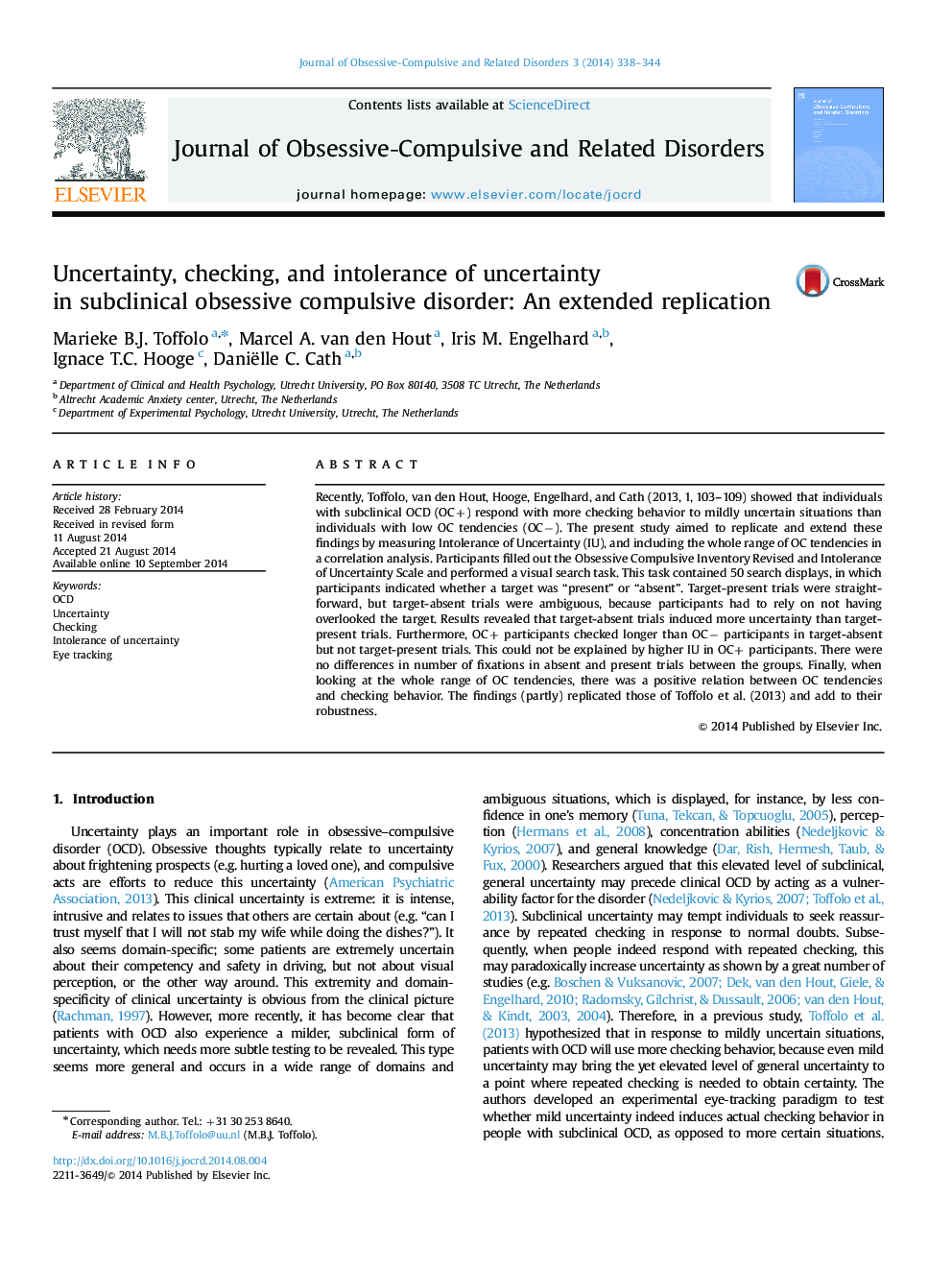| Article ID | Journal | Published Year | Pages | File Type |
|---|---|---|---|---|
| 10448937 | Journal of Obsessive-Compulsive and Related Disorders | 2014 | 7 Pages |
Abstract
Recently, Toffolo, van den Hout, Hooge, Engelhard, and Cath (2013, 1, 103-109) showed that individuals with subclinical OCD (OC+) respond with more checking behavior to mildly uncertain situations than individuals with low OC tendencies (OCâ). The present study aimed to replicate and extend these findings by measuring Intolerance of Uncertainty (IU), and including the whole range of OC tendencies in a correlation analysis. Participants filled out the Obsessive Compulsive Inventory Revised and Intolerance of Uncertainty Scale and performed a visual search task. This task contained 50 search displays, in which participants indicated whether a target was “present” or “absent”. Target-present trials were straight-forward, but target-absent trials were ambiguous, because participants had to rely on not having overlooked the target. Results revealed that target-absent trials induced more uncertainty than target-present trials. Furthermore, OC+ participants checked longer than OCâ participants in target-absent but not target-present trials. This could not be explained by higher IU in OC+ participants. There were no differences in number of fixations in absent and present trials between the groups. Finally, when looking at the whole range of OC tendencies, there was a positive relation between OC tendencies and checking behavior. The findings (partly) replicated those of Toffolo et al. (2013) and add to their robustness.
Related Topics
Health Sciences
Medicine and Dentistry
Psychiatry and Mental Health
Authors
Marieke B.J. Toffolo, Marcel A. van den Hout, Iris M. Engelhard, Ignace T.C. Hooge, Daniëlle C. Cath,
